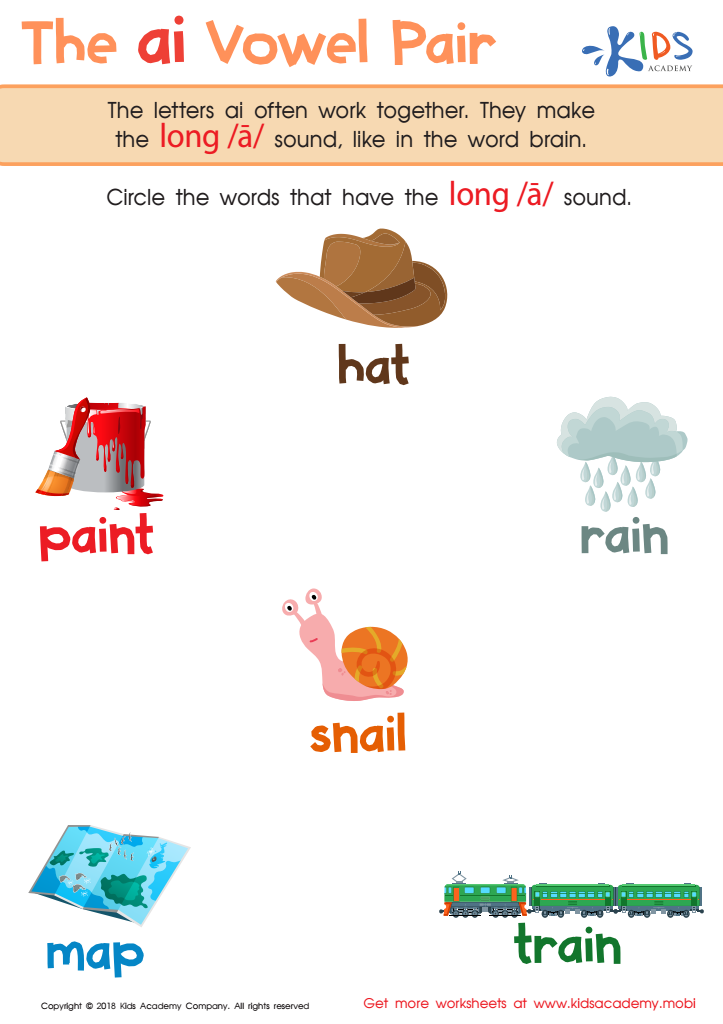Vocabulary expansion Normal Vowel Blends Worksheets for Ages 7-9
7 filtered results
-
From - To
Enhance your child's vocabulary with our Vocabulary Expansion Normal Vowel Blends Worksheets for Ages 7-9. These engaging and educational worksheets are designed specifically to strengthen and expand your child’s language skills. By focusing on common vowel blends, children will learn to recognize, pronounce, and use new words, improving their reading fluency and spelling accuracy. Each worksheet offers fun, interactive exercises and colorful activities that keep young learners motivated. Ideal for classroom or at-home practice, our worksheets support comprehensive language development. Give your child the tools they need to become confident readers and writers with Kid's Academy.


The AI Vowel Pair Worksheet


Reading: OW and OU Words Worksheet


Reading: AI Vowel Team Worksheet


Reading: AW and AU Words Worksheet


Reading: EA and EE Worksheet


Reading: OI and OY Worksheet


Reading: EA as in Bread Worksheet
Vocabulary expansion and the understanding of normal vowel blends are critical for children aged 7-9 as they form the foundation for reading fluency, comprehension, and overall communication skills. During these formative years, children's brains are exceptionally receptive to learning language and its nuances. Expanding vocabulary allows children to better express their thoughts, understand what they read or hear, and engage more effectively in academic and social settings.
Normal vowel blends, such as "ai" in "rain" or "oa" in "boat," are vital components of phonics, helping children decode unfamiliar words more easily. Mastery of these blends enhances their ability to tackle new words, improves reading ability, and boosts self-confidence. By learning these patterns, children can better predict and understand the structure of words, leading to improved spelling skills.
For parents and teachers, reinforcing vocabulary and vowel blends can make learning a more rewarding experience. Lessons that incorporate these elements encourage curiosity, promote a love of reading, and build a strong linguistic foundation that will benefit children throughout their education and beyond. This ongoing development is crucial for academic success and effective communication in daily life.
 Assign to My Students
Assign to My Students












